Walking along Svetozara Markovića Street in Kragujevac in early spring 2024, searching for immovable cultural properties of this city in central Serbia and its Šumadija region, I also reached number 69. There stands a multi-story building categorised as a cultural monument.
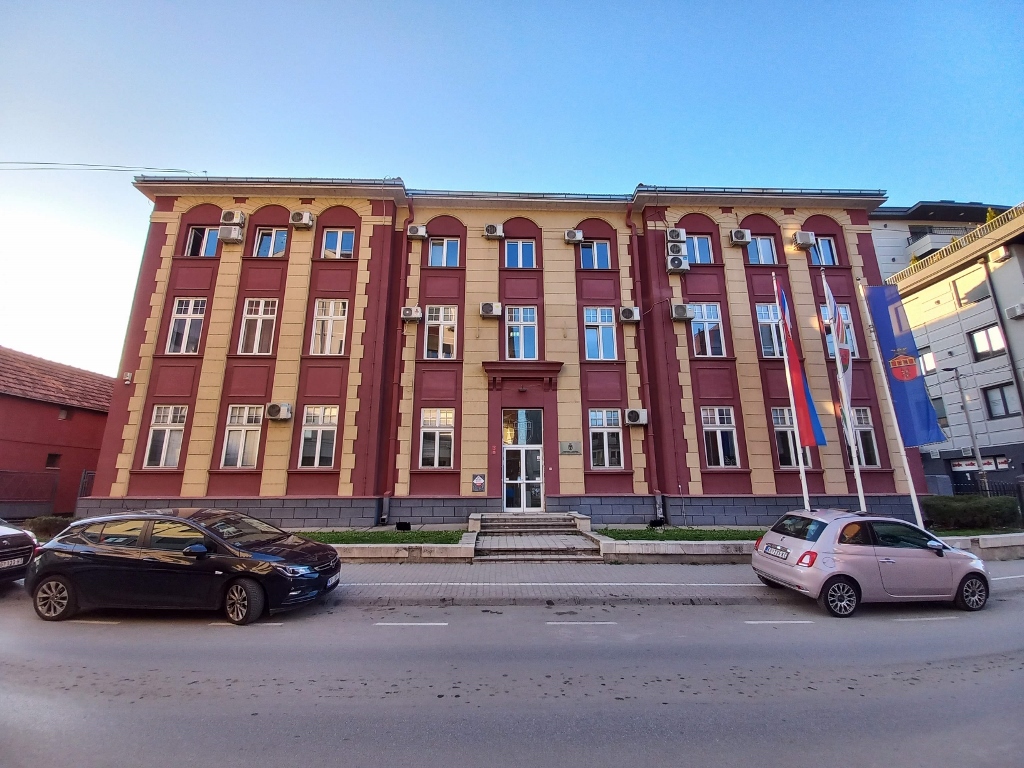 Building at Svetozara Markovića 69
Building at Svetozara Markovića 69
The building was constructed immediately after WWI and originally it served as a boarding school for students and military cadets from [North] Macedonia. It was then named “Home of Mercy,” but today it functions as the Faculty of Medicine in Kragujevac. I hope the spirit of the previous name has not been lost.
In this part of Kragujevac, there are several other cultural monuments that I visited on different days and at different times of day, hence the variations in lighting in the photos. However, the essence remains unchanged.
One of the important cultural monuments is Bubanj Fountain, located next to Bubanj Lake. More precisely, the lake is situated near the fountain. Both of these places are approximately 1 km away from the city centre.
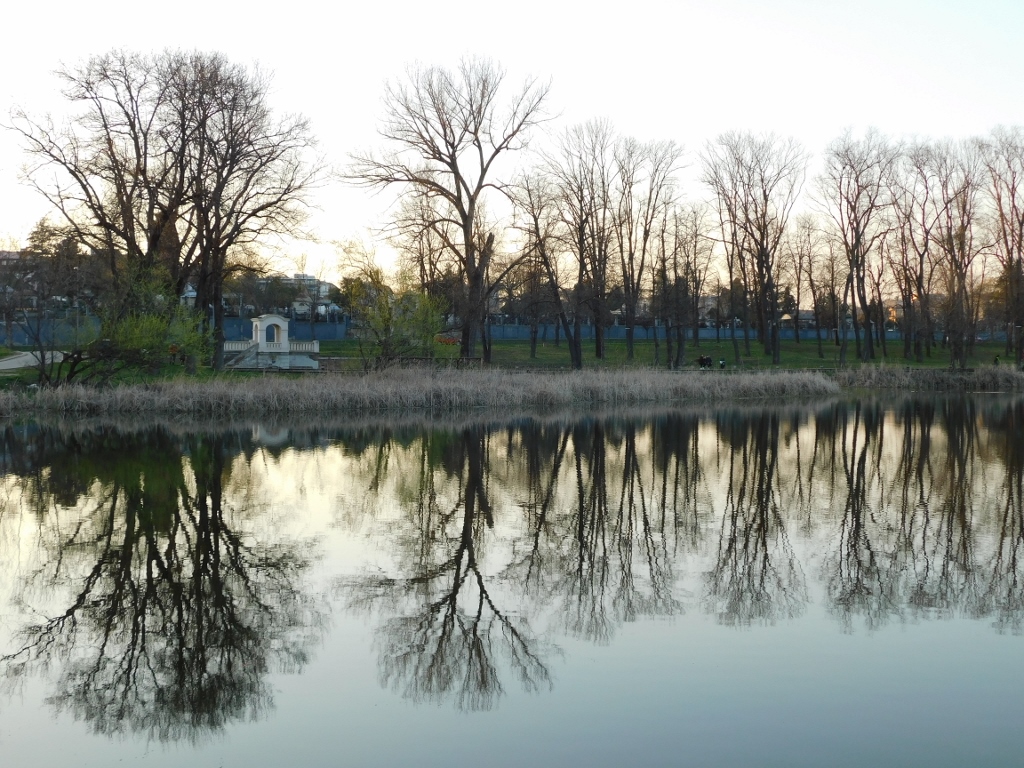 Bubanj Lake, with the Bubanj Fountain nearby (the white structure on the other shore)
Bubanj Lake, with the Bubanj Fountain nearby (the white structure on the other shore)
The lake is not natural, but it formed naturally. To clarify, there used to be a brickyard here and during the 1970s, the area was filled with water coming from a strong spring at Bubanj. Initially, there were only ponds, but over time they merged into this lovely lake. Recently, a walking and running path has been built around the lake and it has also been stocked with fish, so fishermen can be seen here as well.
I didn’t see any fish, but one evening I saw a couple of bird species here. One was the common moorhen (Gallinula chloropus) swimming on the lake and the other species were numerous common starlings (Sturnus vulgaris) perched on tree branches, getting ready for rest.
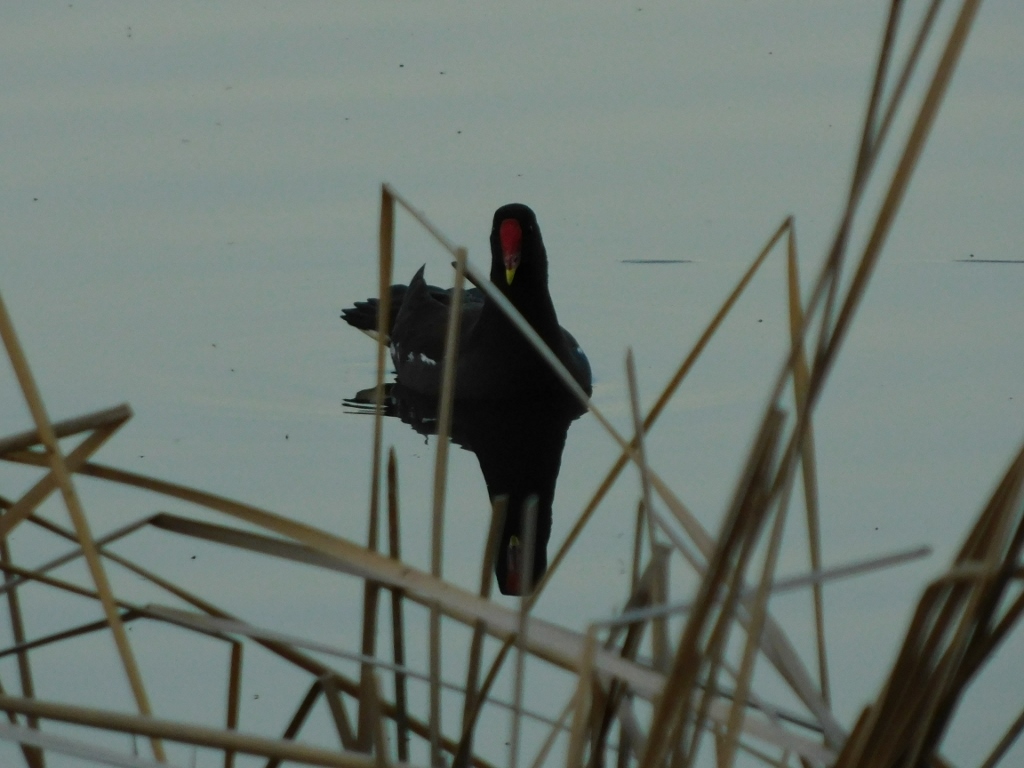 Common moorhen
Common moorhen
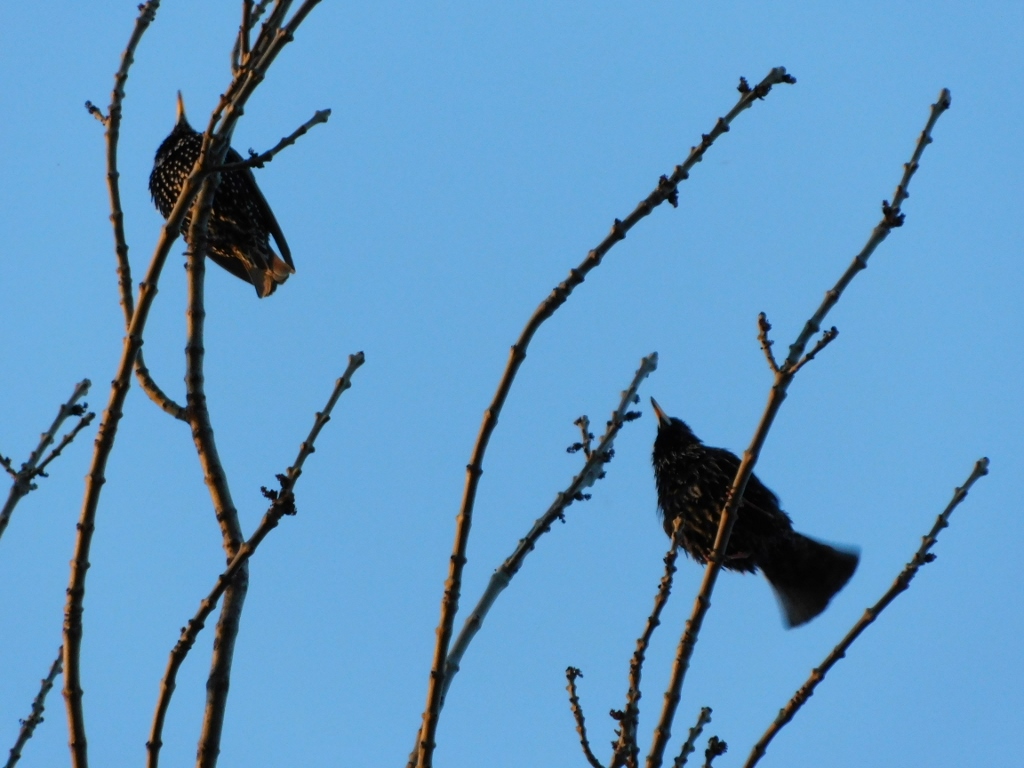 Common starlings
Common starlings
As for the Bubanj Fountain, it is considered one of the most beautiful and certainly one of the oldest monuments in Kragujevac. It was built in the second half of the 19th century, but even during the Turkish period, there was a well-maintained spring (buban in Turkish, hence the name) from which the local population sourced water. Its current form dates back to 1922.
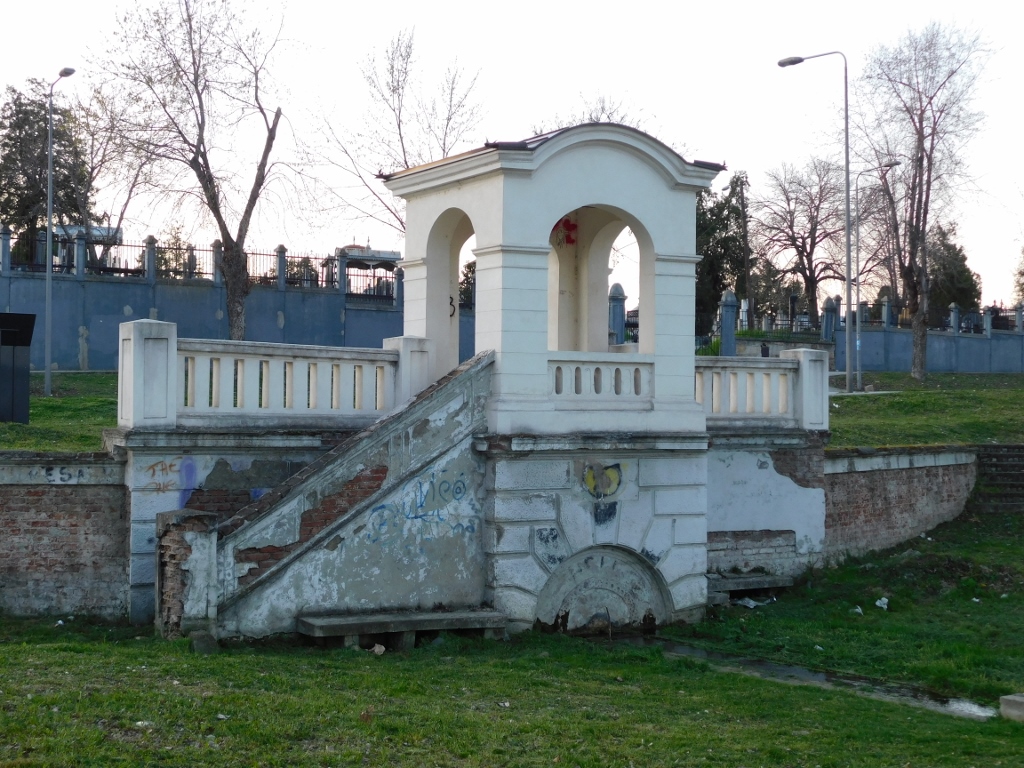 Bubanj fountain
Bubanj fountain
The fountain was designed as a gathering place for people, so it has two parts. The lower part features beautiful decorations and, as I understand it, there is also a reservoir from which water flows towards Bubanj Lake. Originally, the fountain was used for water supply until 1938 when the local water supply system was established.
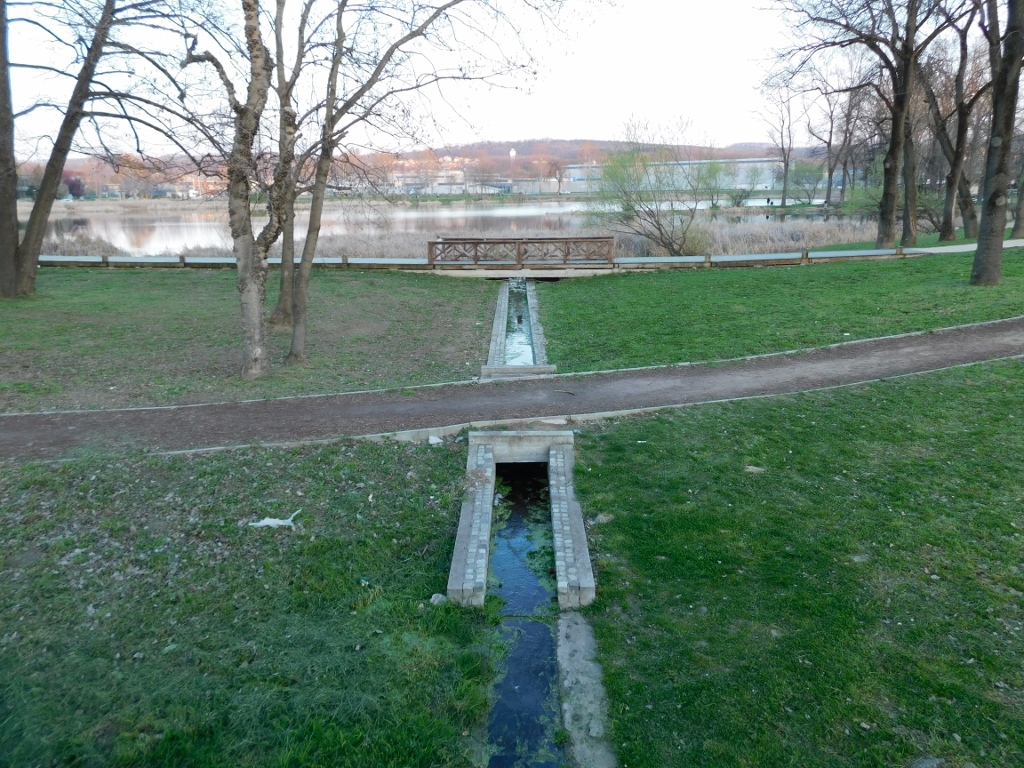 Bubanj fountain
Bubanj fountain
On the upper part, which is at the level of the nearby street and connected to the lower part by stairs made of concrete, there is a viewpoint with benches – so people used to gather here while fetching water, but now it is mostly deserted.
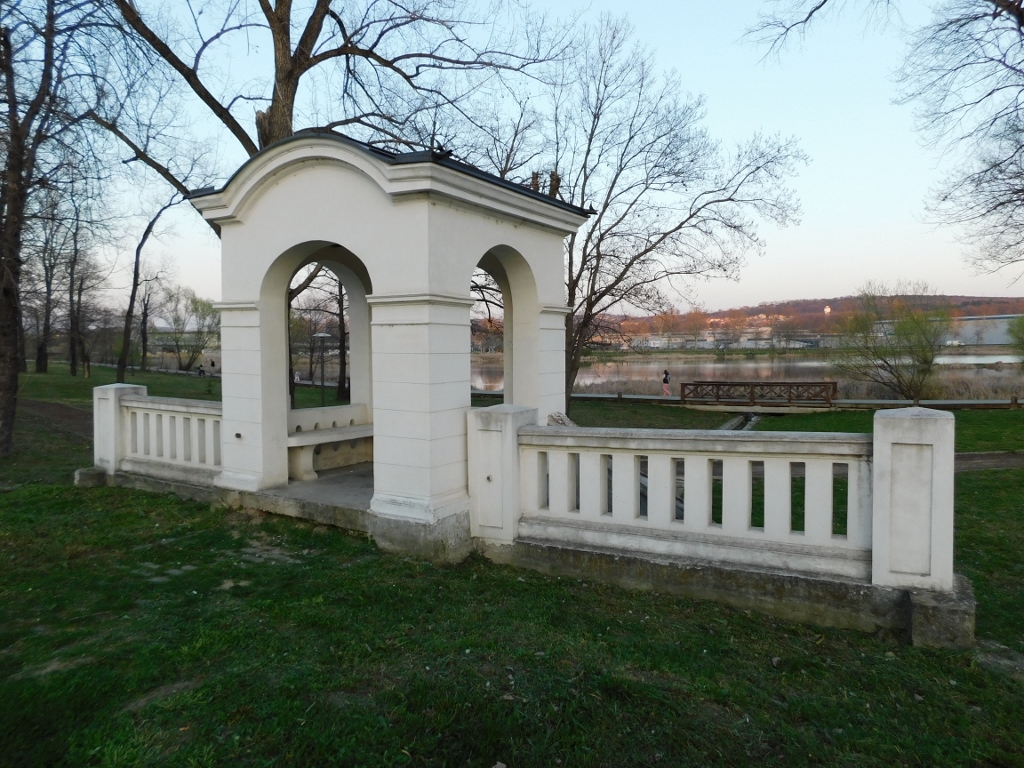 Bubanj fountain
Bubanj fountain
North of the city centre, about 1 km from Bubanj Fountain, there is the University Clinical Centre Kragujevac, within which is the Administration Building of the Hospital in Kragujevac, another cultural monument.
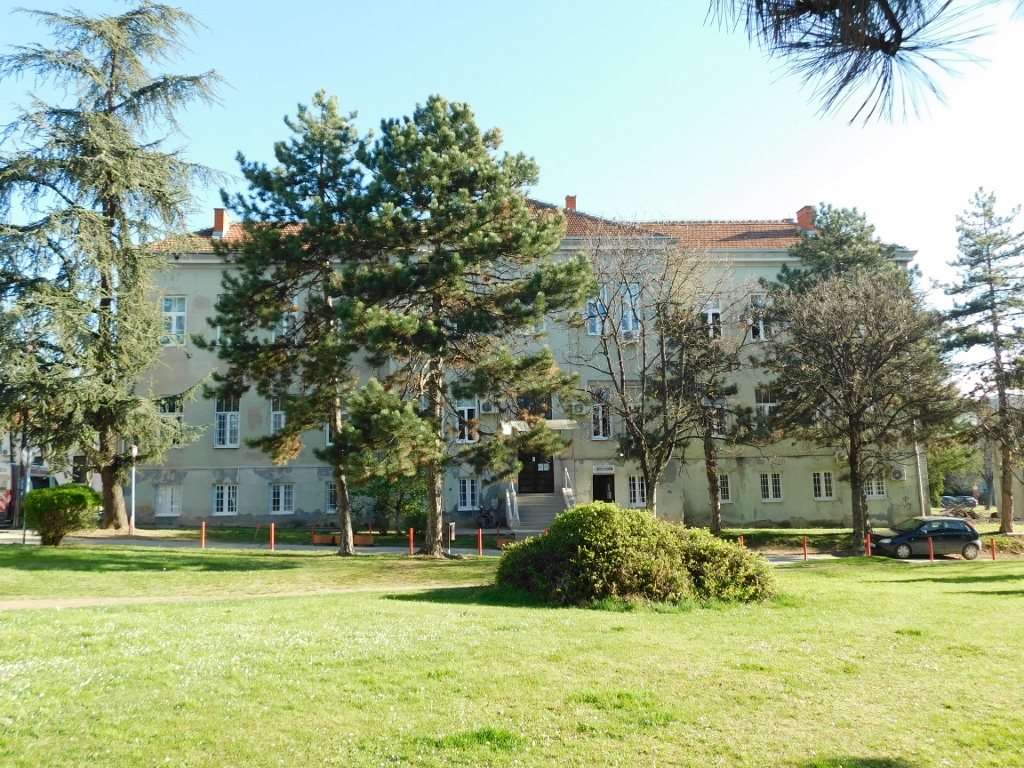 Administration Building of the Hospital in Kragujevac
Administration Building of the Hospital in Kragujevac
The building was constructed between the two World Wars as the administrative building of the hospital and today it still houses administrative offices of the Clinical Centre alongside a medical department.
The structure consists of a semi-basement and two more upper floors. Its decorations are modest, with the central avant-corps featuring the entrance to the building being the only notable embellishment.
In order to understand the significance of healthcare institutions and healthcare in Serbia, it is sufficient to recall the situation during WWI when a typhus epidemic broke out in 1915, affecting 10% of all cases in Serbia specifically in Kragujevac. At that time, there were only 200 doctors in the entire country and all the physicians and nurses working at the hospital in Kragujevac during the epidemic also fell ill. I have previously mentioned Dr. Elizabeth Ross (1878-1915), a Scottish volunteer doctor, who tragically also contracted the disease and passed away in Kragujevac (see: https://www.svudapodji.com/en/kragujevac-3/). The conditions in the hospital were appalling, not only because of the high mortality rate but also because of the state of the healthcare facilities at the time. Therefore, it was of utmost importance to improve the situation after the war and thus significant healthcare and hospital centres gradually kept gaining recognition as cultural monuments.
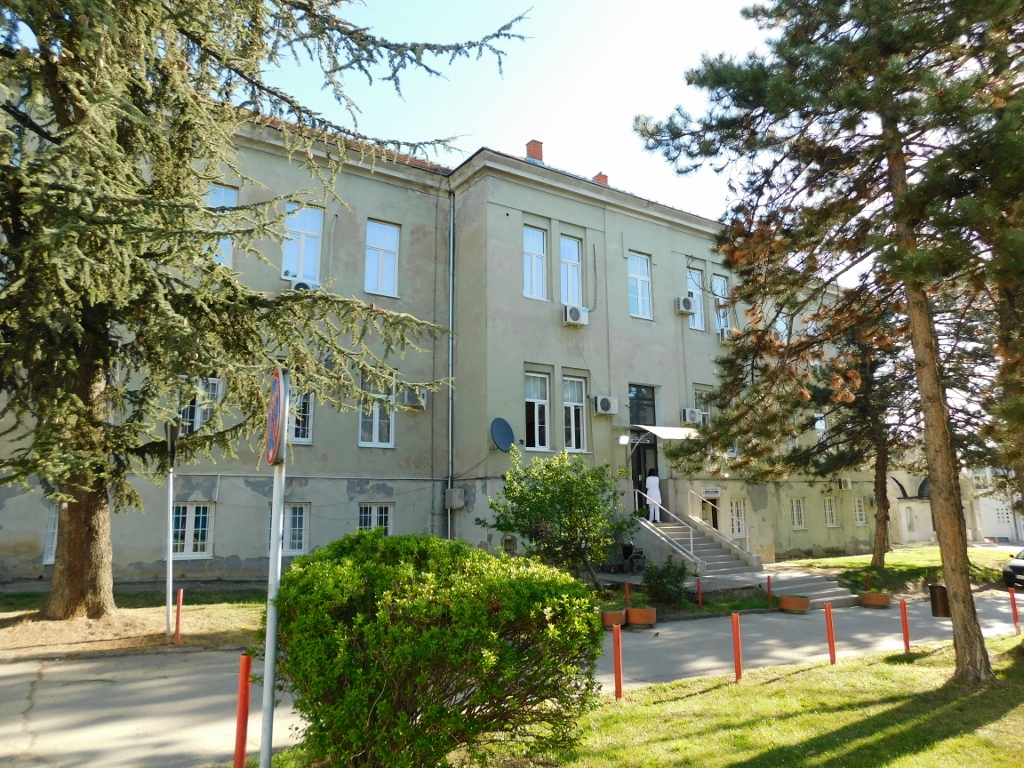 Administration Building of the Hospital in Kragujevac
Administration Building of the Hospital in Kragujevac
Besides physical and mental health, it is very important also to consider the spiritual well-being and energetic purity. I believe this was precisely the focus in a, I would say, miniature park in front of a residential building near the clinical centre. I was delighted to read the signs put up by proactive neighbours in this unassuming piece of nature in the middle of the city, which they named “Naša avlija” (“Our Courtyard”). The signs say: “Take nothing but memories,” “Leave nothing but footprints” and “Kill nothing but time.” Although these messages are familiar to me from before, they are all very beautiful and spiritually uplifting and it would please me to see more of this – both in written and practical forms.
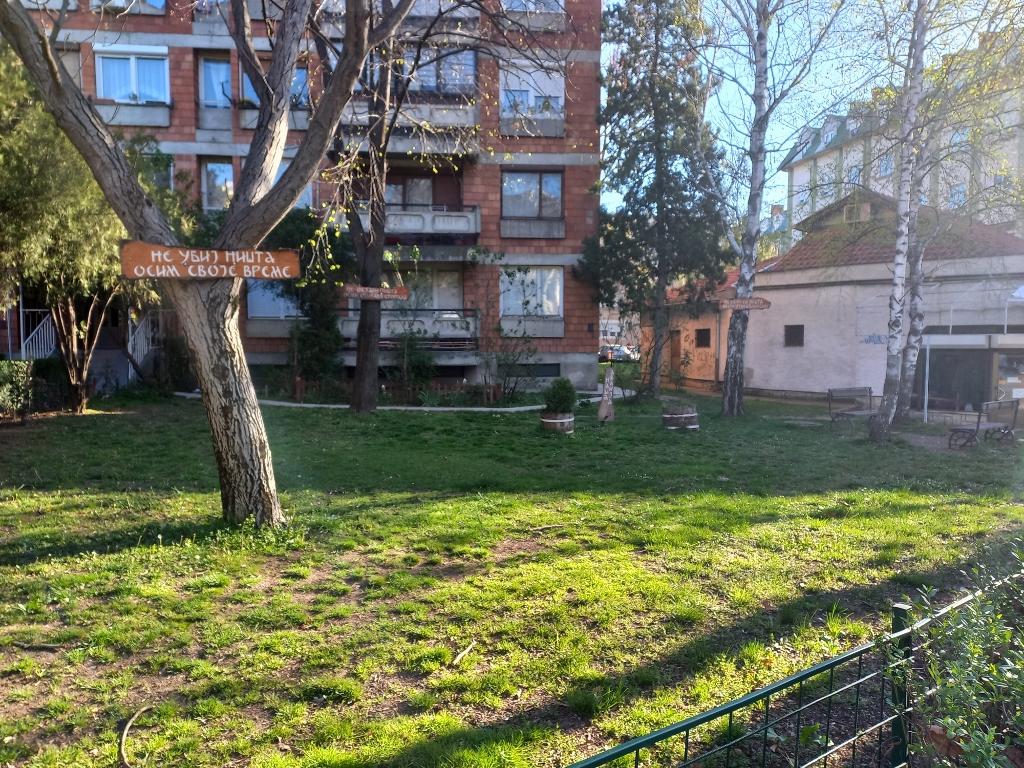 An “avlija” in the middle of a city
An “avlija” in the middle of a city
When heading from the University Clinical Centre Kragujevac towards the city centre, one of the possible routes passes by another building that is a cultural monument. This structure was erected between 1935 and 1936, and it houses the Children’s Library in Kragujevac, located at Milovana Glišića 44 (not to be confused with the nearby Milovana Gušića Street). The official inscription on the building reads: “National Library “Vuk Karadžić,” Children’s Department”).
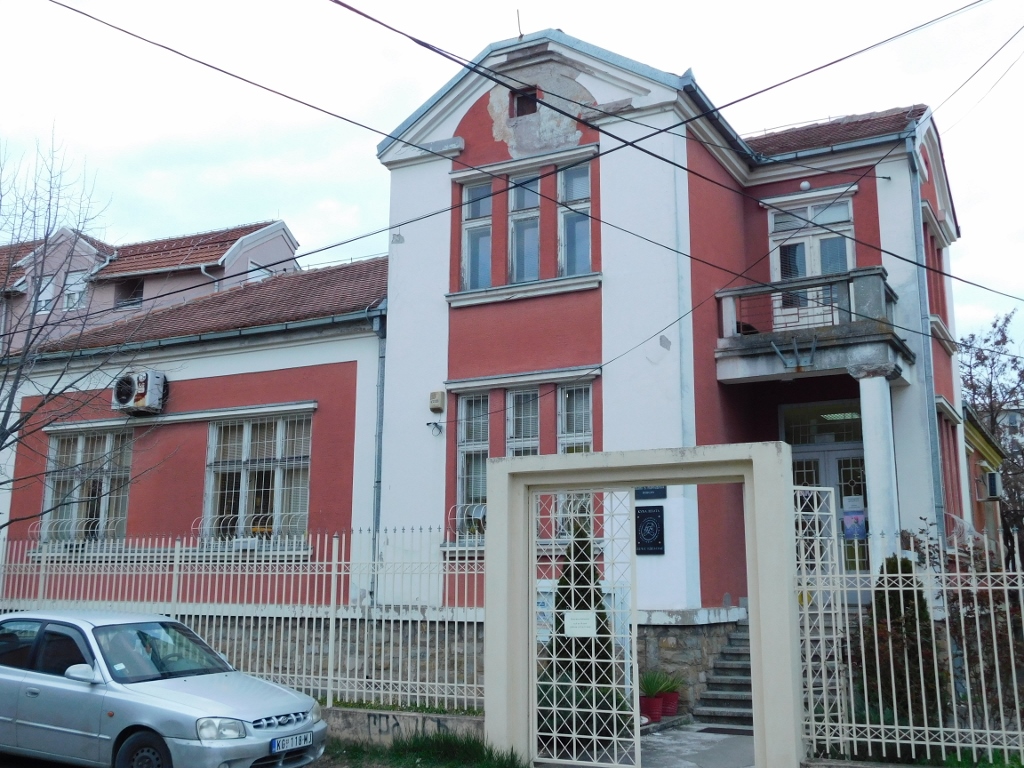 Children’s Library in Kragujevac
Children’s Library in Kragujevac
The house represents the legacy foundation of Professor Jovan Mirković (1871-1945). Originally built as his family home, Professor Mirković bequeathed it for future generations under the condition that it could only be used for cultural purposes. The house was constructed in accordance with the architectural style predominant in the first half of the 20th century and was reconstructed in the early 21st century, preserving all essential elements.
From my reading, I understand that the house contains seven more legacies donated by several prominent citizens of Kragujevac – three art collections and four book collections. This highlights the beauty of selfless bequests to the people, in contrast to (often ungrateful) direct heirs.
Continuing along the route towards the city centre, one can also pass through Milovana Gušića Street (not to be confused with the nearby Milovana Glišića Street), where there is another cultural monument, the Old School in Kragujevac – endowment of Milovan Gušić, after whom the street is named.
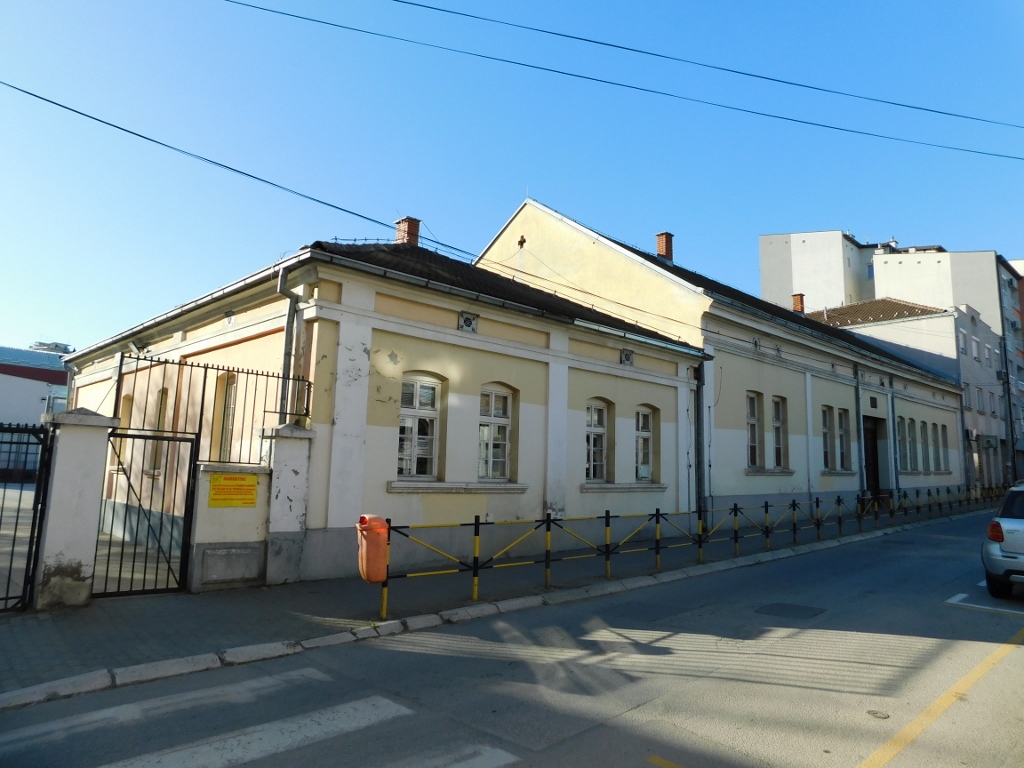 Old School in Kragujevac – endowment of Milovan Gušić
Old School in Kragujevac – endowment of Milovan Gušić
In the previous sequel of my travel story, I mentioned that two buildings belonging to the “Radoje Domanović” primary school, one on Svetozara Markovića Street and the other one here on Milovana Gušića Street (sharing a common schoolyard), have plaques stating that these buildings were endowed by Milovan Gušić. I believe this is accurate, but the materials I used only mentioned one building, which is a single-story structure with a rectangular plan and a central entrance designed “in the form of a passage” and that particular building is indeed a cultural monument. According to the description, this is precisely the building erected in 1893 in an architectural style typical of the late 19th century.
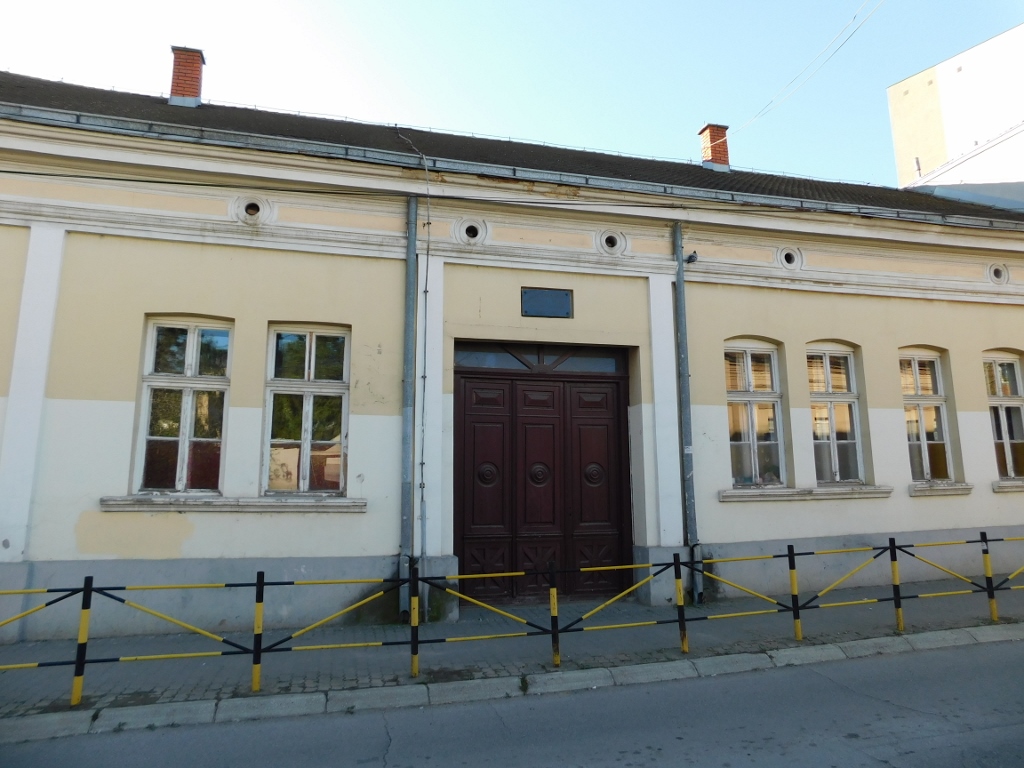 Old School in Kragujevac – endowment of Milovan Gušić
Old School in Kragujevac – endowment of Milovan Gušić
On the one hand, the development of healthcare and education was crucial in Serbia during the 19th century, starting from the uprisings that gradually led to the country’s liberation from the Ottoman Empire. The construction of schools across the liberated territories from the early 1800s onwards was of great significance. Therefore, it is often possible to come across old schools and even their foundations alone that are now categorised as cultural monuments. One such example is the remains of a primary school from the early 19th century in the village of Božidarevac near Belgrade, about which I have already written (see: https://www.svudapodji.com/en/south-belgrade-2021/).
On the other hand, this is another example of the generosity of individuals within the Serbian nation. Ktetorship has been prevalent in Serbia since the founding of the state in the 12th century, as evidenced by the monasteries and churches regularly erected by medieval rulers and nobles. This tradition gradually faded but saw resurgence during the 19th and early 20th centuries, only to fade again into obscurity. It involves “attaining a generally beneficial goal through donation,” but the prerequisite sine qua non is the presence of wealthy and enlightened individuals. While there are wealthy individuals, finding the enlightened ones is like searching for a needle in a haystack.
This building, as well as the previously mentioned two-storey building which is now also a part of the school and the nearby hotel “Zelengora” where I happened to stay during my visit to Kragujevac, are all endowments of Milovan Gušić (1822-1891), a merchant and infantry senior captain. I haven’t delved further into whether he left behind anything else, as it is beyond my current capabilities and interests, but it is possible that there are more endowments attributed to him.
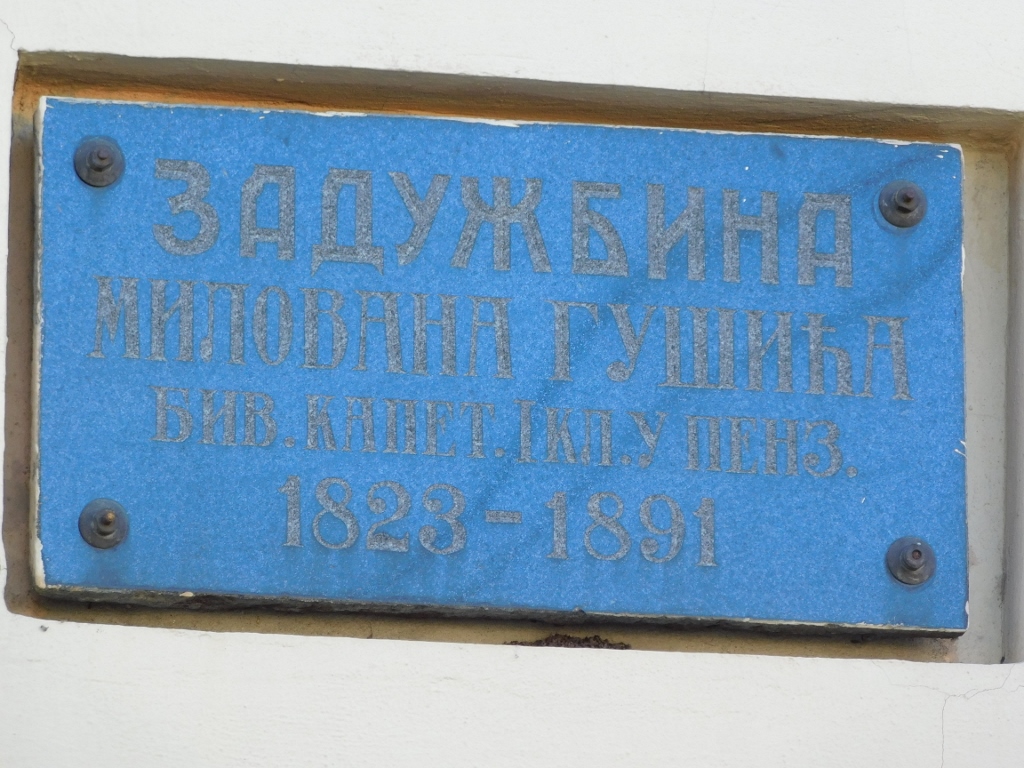 Plaque above the entrance into the Old School in Kragujevac – endowment of Milovan Gušić
Plaque above the entrance into the Old School in Kragujevac – endowment of Milovan Gušić
The next cultural monument I want to mention leads me to the discussion about the house numbers and street names in Kragujevac, as well as the updating of data within the list of national cultural monuments.
So, I was looking for an immovable cultural property named “House at Kragujevačkog Oktobra Street no. 116 in Kragujevac.”
The first problem is that a part of this street, which runs from Šumarice and the 21 October Museum towards the city centre, has changed its name. The section from Veliki Park (Big Park) is now called Kralja Aleksandra I Karađorđevića Street. Kragujevac, like the rest of Serbia, began changing street names about 30 years ago with the shift in systems and the breakup of Yugoslavia. To be frank, the same renaming happened after WWII under the communists, but in the opposite direction. After 1945, main city streets typically bore names honouring Tito or other revolutionary and political leaders of that era. Now, streets are being named after former kings, their wives and other significant figures from national history.
I am quite uncommitted on this topic, as well as on most political topics. But... judging by the different street names that can be seen, for example on a plaque in the centre of Belgrade showing the history of the names of the given street (Kolarska, Dva jelena (this is a mistake, it should be Dva jablana), Dečanska, Kardeljeva, Dečanska, Moše Pijade, Dečanska), I wonder why representatives of local authorities (from all epochs!) who make decisions on these issues spend their time on such things. Don’t they have anything better to do? Something that would actually truly and essentially contribute to improving the lives of the residents of those streets.
Another problem when finding some buildings in Kragujevac is that house numbers have also been changed, so it often happens that two completely different numbers can be seen on a single building. Here is a vivid example from the very centre of the city:
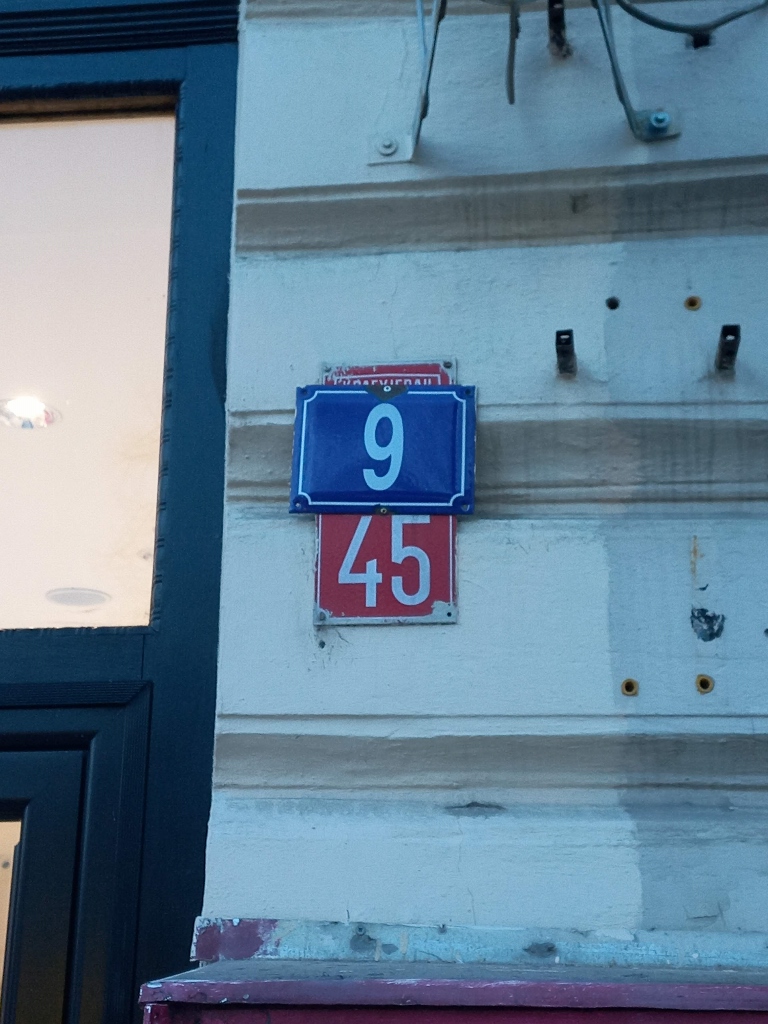 Kragujevac, a detail
Kragujevac, a detail
The third problem I encounter everywhere in Serbia, including Belgrade, is that we behave as if it’s illegal to display house numbers on buildings or as if we’re allergic to doing so. Therefore, very often house numbers are not displayed, making it difficult for passersby and newcomers to locate the buildings.
So, how do you find a cultural monument when neither the street name nor the number is correct, and the new number is unknown? It is very challenging indeed, but I must say that in the end, I managed to find everything I wanted to in Kragujevac and their locations are marked on my map.
Luckily, in the case of the cultural monument I started to talk about, there is documentation that mentions the new street name and new number. However, this immovable cultural property is still listed under the name “House at Kragujevačkog Oktobra Street no. 116 in Kragujevac” because that is how it was first registered in the documentation. The house is specifically located at the corner of Kralja Aleksandra I Karađorđevića Street and Cara Lazara Street.
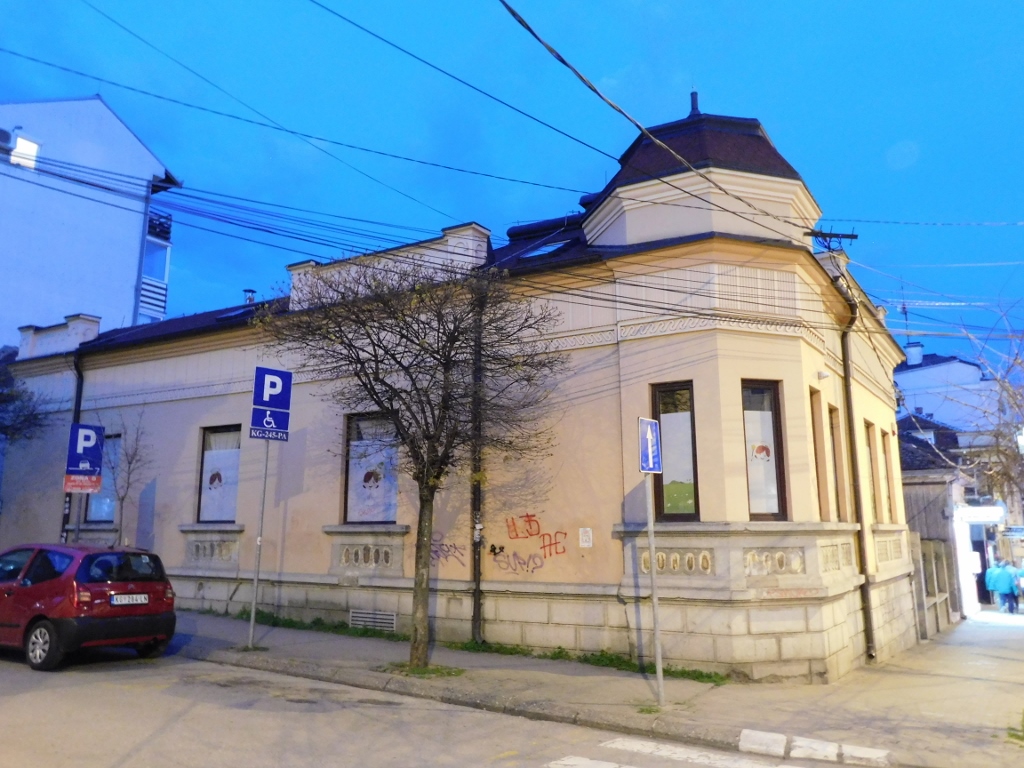 House at Kragujevačkog Oktobra Street no. 116 in Kragujevac
House at Kragujevačkog Oktobra Street no. 116 in Kragujevac
This is a corner residential building from the first third of the 20th century, designed in the spirit of urban architecture of that period, reflecting a gentle transition towards a somewhat more modern style. This is why it is considered significant, as it mirrors changes in urban habits and aspirations. For comparison, one should look at family homes from Svetozara Markovića Street built a hundred years earlier to see how circumstances and styles evolved.
The facade decoration features geometric patterns that are very harmonious. Unlike my own photo, the photographs from the documentation show the house freshly painted and that looks considerably more beautiful. Unfortunately, today one can also see silly scribbles from idle young people. This may sound politically incorrect, but it doesn’t diminish the truth of my statement. Such things are done by the young; older people engage in different kinds of foolishness.
Regarding the building styles and new aspirations in the urban core of Kragujevac, Kralja Aleksandra I Karađorđevića Street hosts an impressive commercial building reflecting changes in circumstances, needs and desires. This is the building of Kragujevačka okružna banka (Kragujevac District Bank) from 1907.
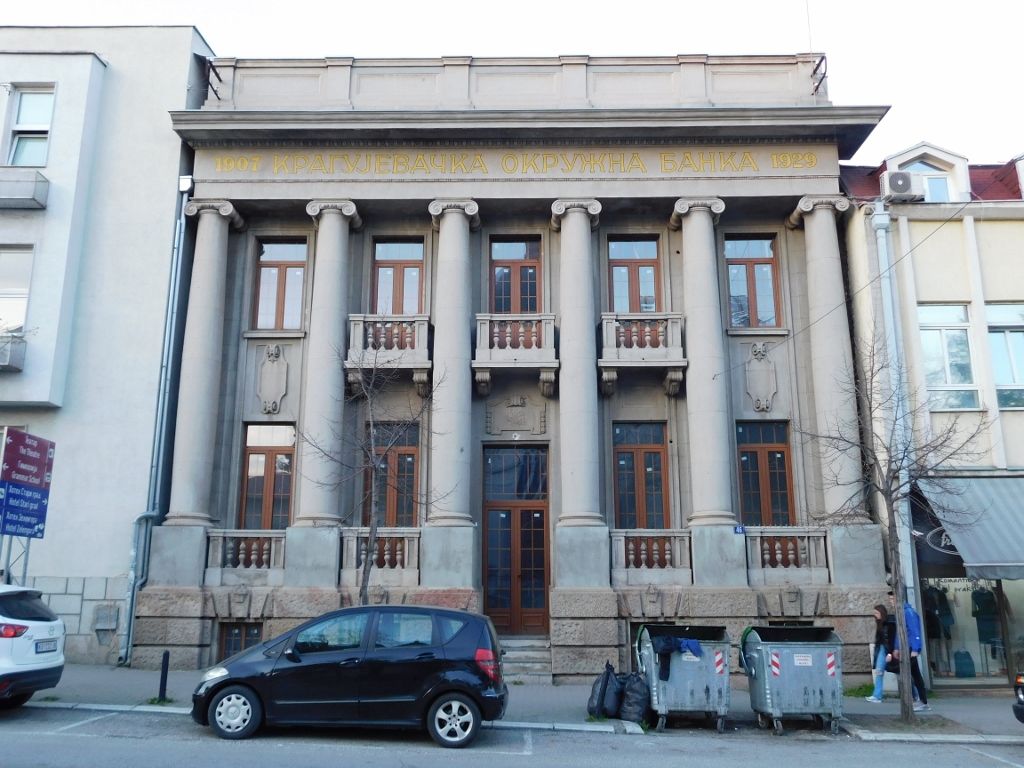 Kragujevac, a detail
Kragujevac, a detail
As I’m mentioning one bank building, let me also talk about another one just a few dozen metres away. It is the branch of the National Bank of Serbia in Kragujevac, which also houses a branch of the Tax Administration of the Republic of Serbia. Both branches are located in the same building, accessed from Branka Radičevića Street, while its side with a row of seven Ionic columns faces Kralja Aleksandra I Karađorđevića Street.
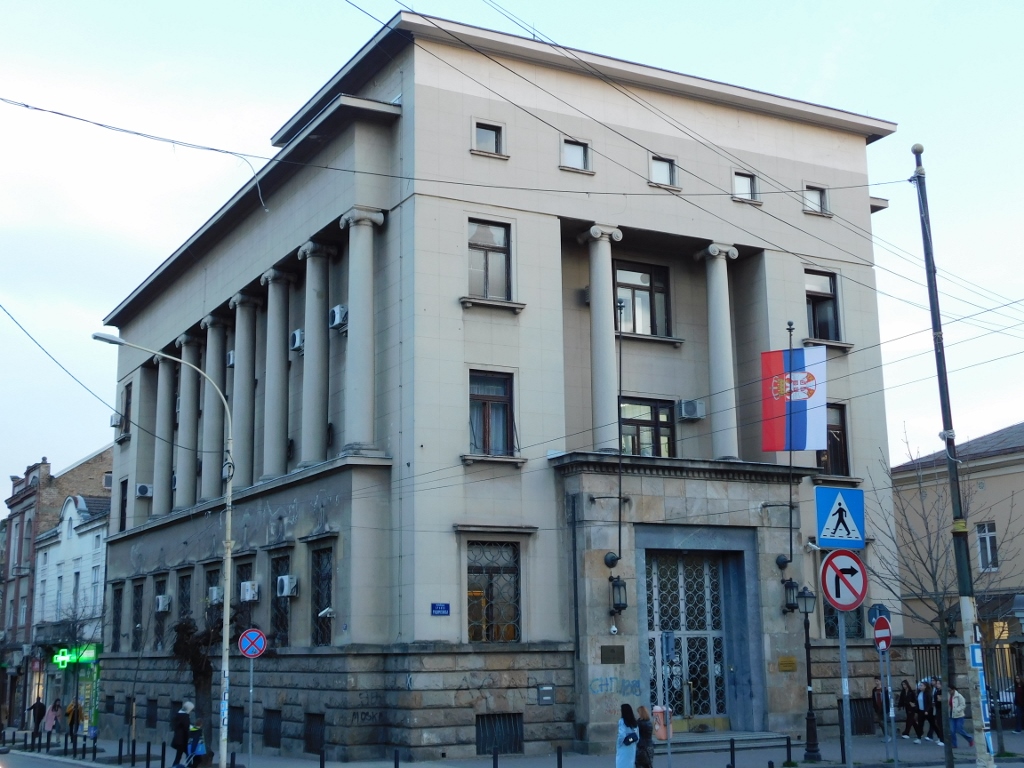 Kragujevac, a detail
Kragujevac, a detail
Right across from the front facade of the National Bank of Serbia in Kragujevac is the churchyard of the Cathedral Church of the Assumption of the Theotokos.
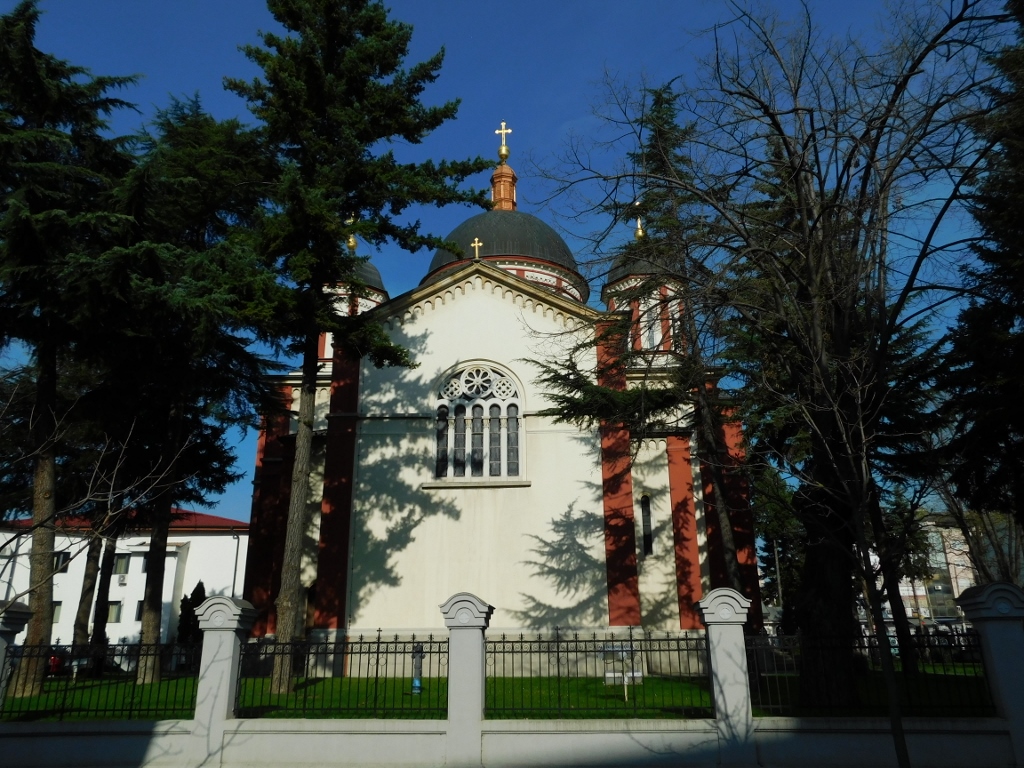 Cathedral Church of the Assumption of the Theotokos
Cathedral Church of the Assumption of the Theotokos
The church was built between 1871 and 1884 and today it is also a cultural monument.
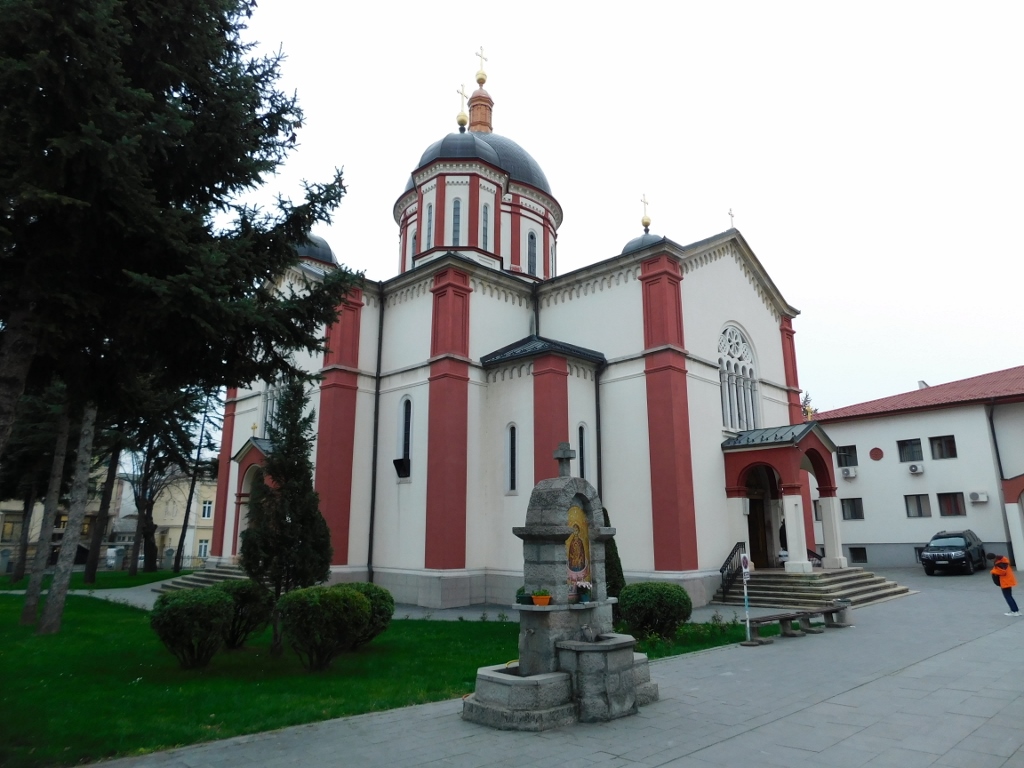 Cathedral Church of the Assumption of the Theotokos
Cathedral Church of the Assumption of the Theotokos
It was constructed from stone and brick based on the design by Andreja Andrejević (1840-1893), the first architect to work in Serbia (he was educated abroad). Some elements of the Russian national school can be observed in its appearance. The church has a cross-in-square plan and features five domes, with the central dome being the largest. One of its distinctive features is the rectangular apse, visible in my first photograph depicting the church.
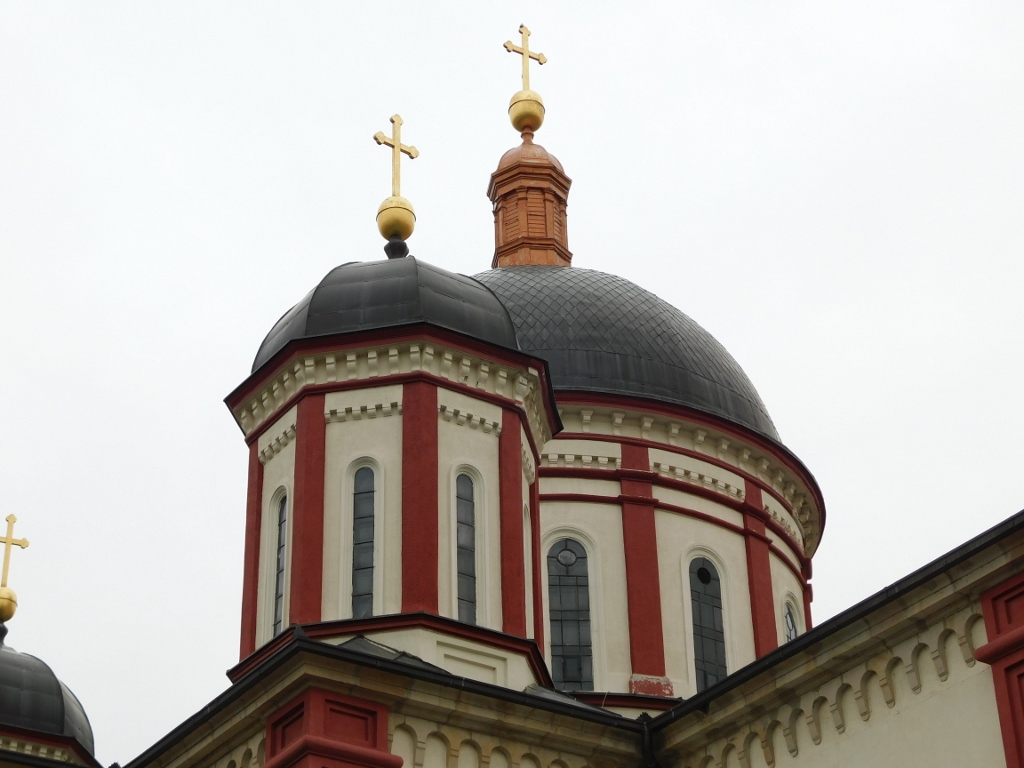 Cathedral Church of the Assumption of the Theotokos
Cathedral Church of the Assumption of the Theotokos
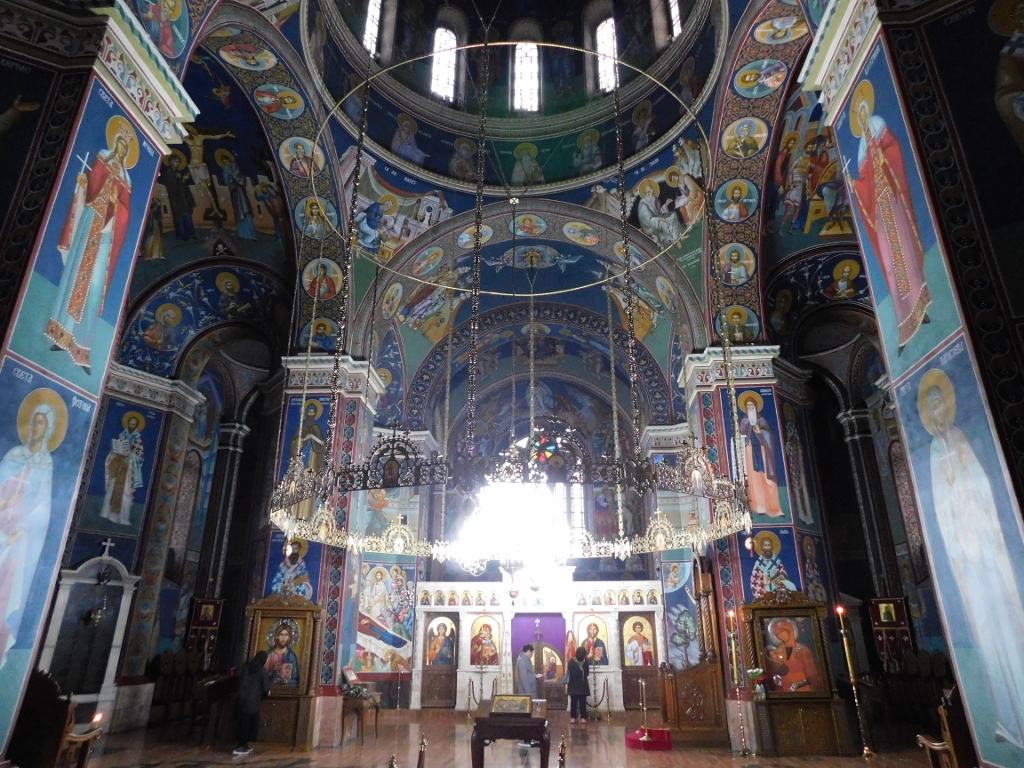 Interior of the Cathedral Church of the Assumption of the Theotokos
Interior of the Cathedral Church of the Assumption of the Theotokos
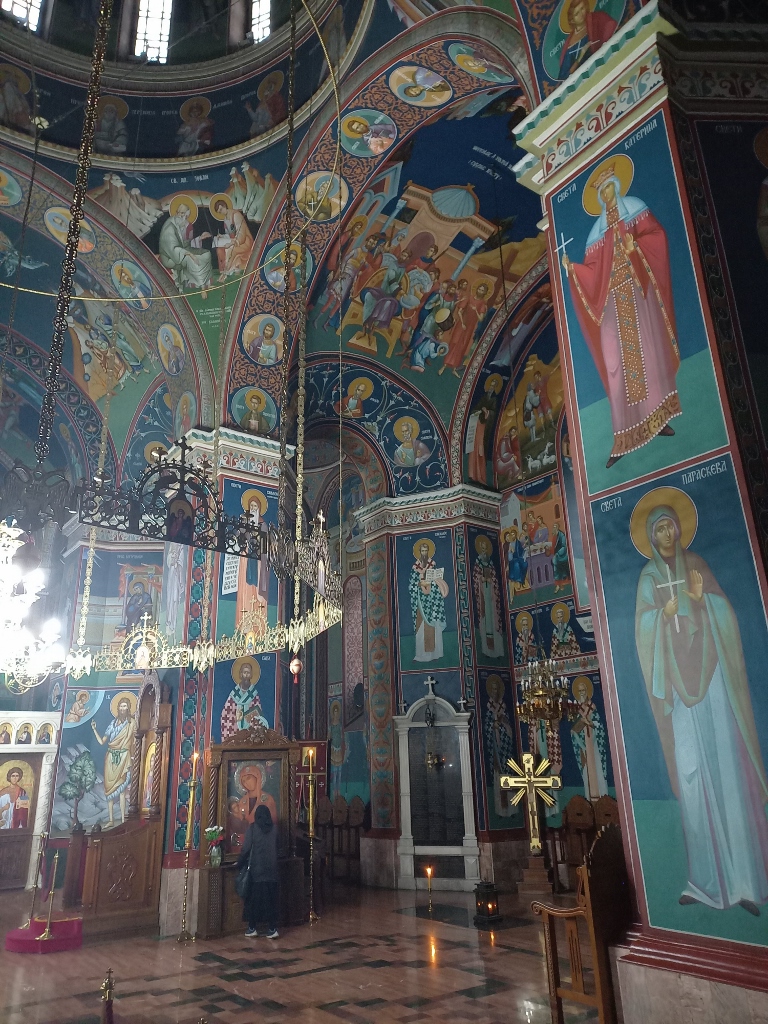 Interior of the Cathedral Church of the Assumption of the Theotokos
Interior of the Cathedral Church of the Assumption of the Theotokos
Another specificity visible upon entering the church is the gallery on the western side, which was also a unique architectural solution in the Serbian church construction of that time.
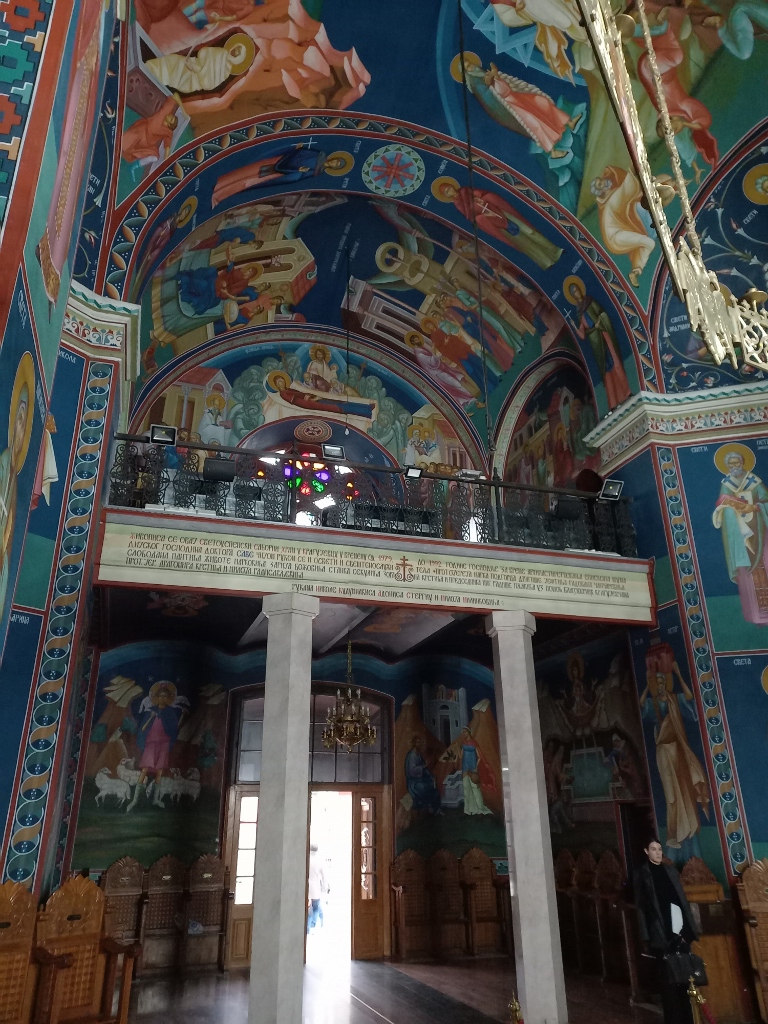 Interior of the Cathedral Church of the Assumption of the Theotokos
Interior of the Cathedral Church of the Assumption of the Theotokos
In the very centre of Kragujevac, there is a large number of other cultural monuments. Fortunately, this time around, I had the opportunity to stay in Kragujevac for several days, so I didn’t have to rush. I could leisurely visit and capture everything during my free time.